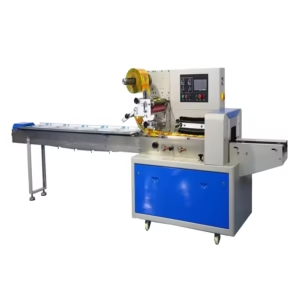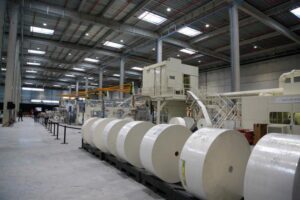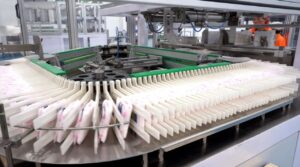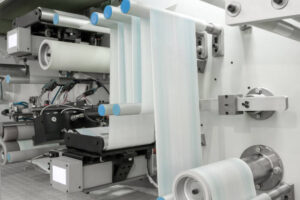Difference Between Hydrophobic And Hydrophilic Non Woven Materials
Hydrophobic and hydrophilic nonwoven materials are two types that are sometimes mistaken, but the hydrophobic hydrophilic difference is mentioned below:-
For uses involving water, each has unique qualities. These names’ Latin roots can be used as a guide to comprehending them. Both characters share the same root, “hydro,” which is Greek for “water.” The words “phobic” and “philic,” which come after them, respectively, indicate “fear” and “attraction,” respectively. It is a hydrophilic and hydrophobic difference in proper manners.
This material has a very low absorbency and excellent stability, preventing water from penetrating it. Products that act as a dry barrier while withstanding moisture use hydrophobic nonwoven.
Some fibers—like polyester—have hydrophobic properties by nature. In other situations, coatings and treatments can be applied to inherently absorbent fibers like cotton to create hydrophobic materials. In contrast, hydrophilic material draws and retains water. Products that need to absorb liquids and moisture but still need to maintain their original strength and form require hydrophilic materials. A naturally water-repellent fabric like polyester can be converted into a hydrophilic material by adding additives like surfactants, wetting agents, and rewetting agents.
What is Hydrophobic Hydrophilic Difference in general?
The majority of the known chemicals can be dissolved using water, which is a well-known solvent. However, not all substances found in nature mix with water. The term “hydrophilic” refers to chemicals that can combine with water. In contrast, “hydrophobic” refers to substances that cannot. The polarity of water molecules is primarily to blame for this. In a polar solvent, nonpolar compounds cannot dissolve. Consider the principle that “like dissolves like” in this situation. Polar solvents can dissolve polar substances. In nonpolar solvents, nonpolar compounds dissolve. Therefore, polarity is required for hydrophilic compounds to dissolve in water. The primary distinction between hydrophobic and hydrophilic molecules is that the former are nonpolar, while the latter are polar. Difference Between Hydrophobic And Hydrophilic Non Woven Materials

Get Free Sample Kit Of Our Fabric At Your Door Step
- Online Order
- Door Delivery
- 1-Click Quotation
The goal of Favourite Fab is to satisfy the need for nonwoven fabric. We make hydrophilic nonwoven fabrics in India. We are one of India’s top producers of SMMS fabrics. The Hydrophilic Non Woven is detailed below and utilized in a variety of industries:
- In Medical Industry
- In Pharmaceutical Industry
- In Personal Hygiene products
- As for wipes in beauty
- In baby diapers & cleaning wipes
- Nonwoven Raw Material for Baby Diapers
| Name | Hydrophilic Non woven |
| Composition | Polypropylene (PP) |
| Weight | 30-40 KG |
| Width | 63” or 126” |
| Color | White, M.BLUE, Beige , as per order |
| Pattern | Plain |
| Certificate | ISO, GMP, FDA |
| MOQ | 1000 kg |
What does Hydrophilic Meaning in general?
A capacity to quickly mix with, dissolve in, absorb, or get saturated with water. In general, the term “hydrophilic” refers to creatures that frequently engage with or are influenced by water.
Fabrics with hydrophilic finishes have a natural affinity for and attraction to water. The same technique is used to apply a hydrophilic surface; however, this finish transfers water through a process known as “wicking” or “moisture management.”
The ability of highly hydrophobic surfaces to reject both water and oil is an impressive property. But because they are hard to make, expensive, and contain harmful chemicals, they aren’t used as much as they could be. The goal of making nonwoven fabrics that don’t absorb water using cheap and safe materials. Difference Between Hydrophobic And Hydrophilic Non Woven Materials
Even though many materials can be wet, nonwoven cotton fabrics with hydrophobic surfaces have gotten a lot of attention. This is mostly because of how easy it is to work with, how flexible it is, how friendly it is to the environment, how cheap it is, how quickly it breaks down, how well it works, and how easy it is to make more of.
The Hydrophobic Non Woven is utilized in a variety of industries:
- Filter Materials
- Tablecloths
- Compound Packing Materials
- Disposable Medical Items
- Personal Healthcare Products
- Diapers
| Name | Hydrophobic Non woven |
| Composition | Polypropylene (PP) |
| Weight | 35-45 KG |
| Width | 63” or 126” |
| Color | White, M.BLUE, Ivory, as per order |
| Pattern | Plain |
| Certificate | ISO, GMP, FDA, NITRA |
| MOQ | 1000 kg |
Hydrophobic Fibers Definition in general?
Fiber is said to be hydrophobic if it dislikes water. These fibers also have an oleophilic inclination. This indicates that they will absorb oil and like it. Polyester is an illustration of a hydrophobic textile.
Favourite Fab Manufacture Hydrophilic Nonwoven that actively absorbs water. The term hydrophilic consists of the terms hydro (=water) and philic (=loving). Thus, a Non-Woven fabric that actively absorbs water is known as Hydrophilic Non-Woven Fabric.
Therefore, due to its property, it must be prepared by skilled hands; therefore, we at Favourite Fab guarantee to give you the highest quality hydrophilic and hydrophobic nonwoven fabric.
Hydrophilic and Hydrophobic Nonwoven Fabrics are offered in bulk, and both Quality and Quantity are guaranteed. These materials are distinct from one another and have different qualities. The hydrophilic fabric readily absorbs water, but the hydrophobic fabric is resistant to water.

Get Free Sample Kit Of Our Fabric At Your Door Step
- Online Order
- Door Delivery
- 1-Click Quotation
Application of Hydrophobic Nonwovens in the Field of Medical Textiles
Current medical advancements are commendable for their excellence. You cannot consider any of these developments without considering medical textiles. And suppose you are visiting your nonwoven fabric supplier today. In that case, nonwoven can be utilized in the medical field in the following ways:
1. Medical device implants
2. Separation gowns
3. Surgical drapes and coverings
4. Gloves
5. Wound dressings
6. Pharmaceutical packaging
7. Toilet paper
8. Drug delivery and
9. Surgical masks
When contacting the top nonwoven manufacturer, it is essential to inquire about the compatibility and advantages of hydrophobic nonwoven fabrics. These fabrics have successfully replaced conventional barrier-ending medical textiles, and their features make them a superior choice for use in the field.
Produced from natural fibers, hydrophobic nonwoven fabrics are eco-friendly and a superior solution in the medical area. These restorative materials are also cost-effective and will facilitate the efficient delivery of medical aid. Because they are disposable and excellent for single use, no medical institution will neglect hydrophobic nonwoven materials. Difference Between Hydrophobic And Hydrophilic Non Woven Materials
Is Rayon Hydrophilic Or Hydrophobic Fabric?
Rayon is a regenerated cellulose fabric produced by dissolving and wet-spinning cellulose derived from wood and cotton. It is hydrophilic, biocompatible, and less expensive than silk. It has been widely utilized in cosmetics (mainly mask packs) and applications. The production cost of silk nonwoven fabric should be reduced to expand its use in industries such as cosmetics, agriculture, healthcare, and filters.
As a cellulose fiber, it is hydrophilic (an water absorber). It gives exceptional performance when paired with a hydrophobic polyester. Rayon nonwovens can also be treated with heat to achieve varying levels of carbon purity for use in a range of flexible insulating materials. This intriguing fiber might be the best option for your application.
As a semi-synthetic material, rayon has both durable and less durable surfaces. The fabric is biodegradable and composed of basic renewable materials, specifically wood cellulose. Consequently, the production of rayon fabric does not contribute to plastic soup. It is in high demand on the market due to the following properties:
1. Soft and silky – Rayon has a soft, pleasant feeling comparable to natural fabrics such as cotton and linen.
2. Shiny – Rayon is renowned for its sheen, which ranges from a subtle glow to a highly lustrous texture.
3. Wrappy – Rayon fabric possesses what is commonly referred to as a “fluid drape,” meaning that it hangs and glides similarly to a liquid. This droop indicates that rayon is not as rigid as robust textiles such as canvas and can retain wrinkles.
4. Moisture-absorbent – Rayon is not water-resistant; in fact, it is more absorbent than cotton. Since it absorbs moisture from the skin, rayon is a perfect material for activewear and humid climates due to its absorbency. Due to the material’s tendency to shrink when wet, many rayon textiles cannot withstand machine washing and must be dry-cleaned or hand-washed.
5. Respirable – Rayon is not a naturally warm material. Thus it does not retain heat. The material’s coolness and breathability make rayon popular for fitness apparel. Dailyhunt

Get Free Sample Kit Of Our Fabric At Your Door Step
- Online Order
- Door Delivery
- 1-Click Quotation
FAQs
- Where can I find the best Hydrophilic and Hydrophobic Non Woven Fabric in India?
- We offer both hydrophilic and hydrophobic non-woven fabric in bulk, guaranteeing both quality and quantity. These fabrics are distinct from one another and exhibit opposing qualities. One hydrophilic fabric is a water lover; thus, it absorbs water quickly; on the other hand, the hydrophilic fabric repels water.
2. Non Woven Fabric Characteristics
- Our cloth has a smooth touch and a light feels to them.
- Excellent water absorption
- Chemical Resistant Plain Non Woven Fabric Hydrophilic Non Woven Fabric for Hygiene
3. Who are the most prominent Hydrophilic Non Woven Fabric Manufacturers in India?
- We at Favourite Fab are determined to meet the need for Non Woven Fabric. We are India’s top manufacturer of hydrophilic nonwoven fabric. We can also provide hydrophobic cloth material. We are one of India’s leading SMMS fabric manufacturers.
4. Is polyester hydrophilic or hydrophobic?
- Hydrophobic is a kind of artificial fabric that repels water; some sports and daily wearable clothes are made with this.
5. What is hydrophilic fibers definition?
- Hydrophilic fibers are such fibers that have water-loving properties & these are used in the manufacturing of such materials where liquid absorbency is required. E.g., Sanitary napkins, diapers, tampons, etc.
tags- Hydrophilic Or Hydrophobic Fabric, Hydrophobic And Hydrophilic Non Woven Materials,





































We Do Business On Trust.Our Nonwoven fabric Business is Built on trust. Trust starts with Transparency.
Mr.Ramniwas Garg Founder Of Favourite Group